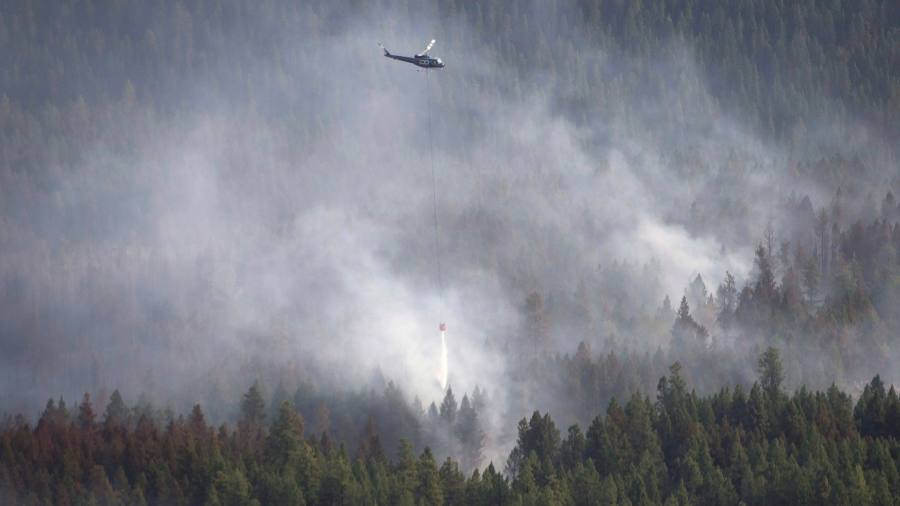Wildfires in boreal forests circling Earth’s northernmost latitudes are rapidly emitting more carbon dioxide, according to an international study using new satellite technology.
In 2021, the burning of boreal forests in Eurasia and North America released a record 1.76 billion tons of carbon dioxide, accounting for 23% of the total global fire carbon dioxide emissions. Global Energy-Related CO2 Emissions That same year reached a record high of nearly 37 billion tons.
“Boreal forests may be a carbon time bomb, and the recent increase in wildfire emissions has me concerned that the clock is ticking,” said Steven Davis of the University of California, Irvine, and co-author of the study, which was published in the American Association for Published in Journal for the Annual Meeting on the Advancement of Science in Washington DC science.
While tropical forest fires have attracted widespread attention, boreal forests have been relatively neglected due to deforestation, according to researchers led by scientists from China’s Tsinghua University. This is despite the fact that they are one of the most extensive and important biomes on Earth, and are threatened by warming that is occurring in the Arctic more rapidly than the rest of the planet.
Measuring fire emissions is critical to modeling climate change. But it is difficult to directly determine the contribution of new carbon sources when the atmosphere already contains so much long-lived carbon dioxide. Instead, the researchers turned to an indirect method.

As a proxy, they monitored the carbon monoxide produced by the fires, which persists in the atmosphere for no more than a few weeks before being oxidized to carbon dioxide.
The analysis used data from instruments on NASA’s Terra Earth-observing satellite, Maupit (measurement of tropospheric pollution), which has a series of continuous records going back to 2000.
The results support other evidence that wildfires have expanded over the past two decades in boreal forests, which are largely composed of conifers with some birch and poplar trees. Emissions from these fires rose rapidly in 2021, a year of severe drought and heatwaves that continued into 2022, although the latest figures are not yet available.
Wildfires in boreal regions have grown faster than tropical forests over the past decade, partly reflecting a faster rise in average temperatures in the Earth’s north than near the equator as reflective layers of snow and ice melt due to global warming.
The study also confirmed a feedback between climate change and wildfires.
The increased carbon dioxide released by the fires “poses an increasing threat to the climate, as some of the emissions may not return to vegetation and soils because trees do not grow as well in warmer and drier conditions,” the scientists said.
Although the new study used satellite data, “we also need ground-based measurements to monitor forest fires,” says co-author Philippe Sias of Université Paris-Saclay.
But the breakdown in scientific relations with Russia, which has the world’s largest northern region, after the Ukrainian invasion “was a real problem for our understanding,” Ciais said. “We will lose years before we officially have the data we need in Russia and northern Siberia.”
*Map information provided by NASA Resource Management System Fire Information
climate capital

Where climate change meets business, markets and politics. Explore the FT’s coverage here.
Are you curious about the FT’s commitment to environmental sustainability? Learn more about our science-based goals here


